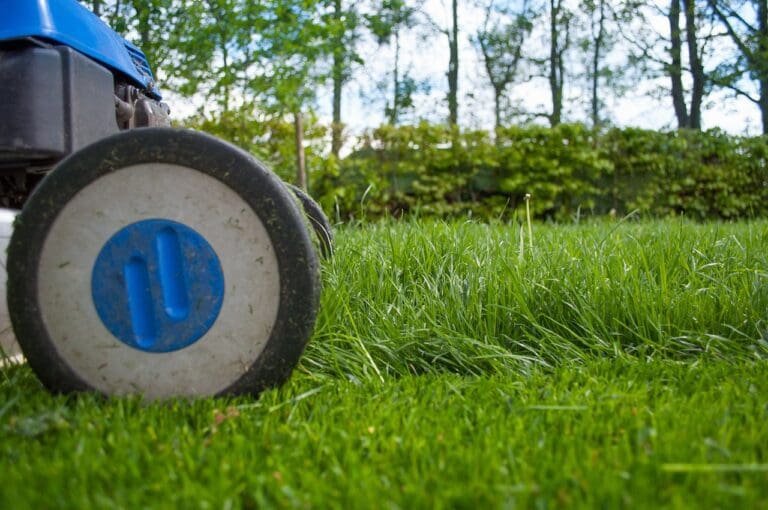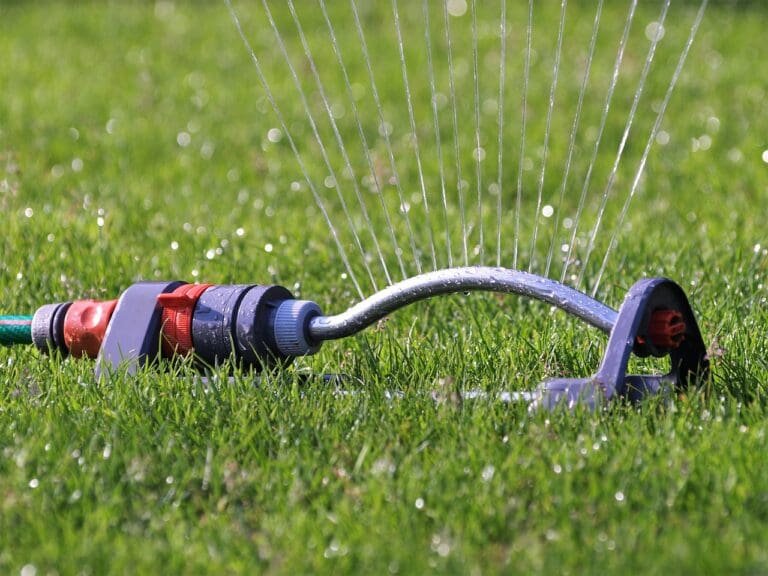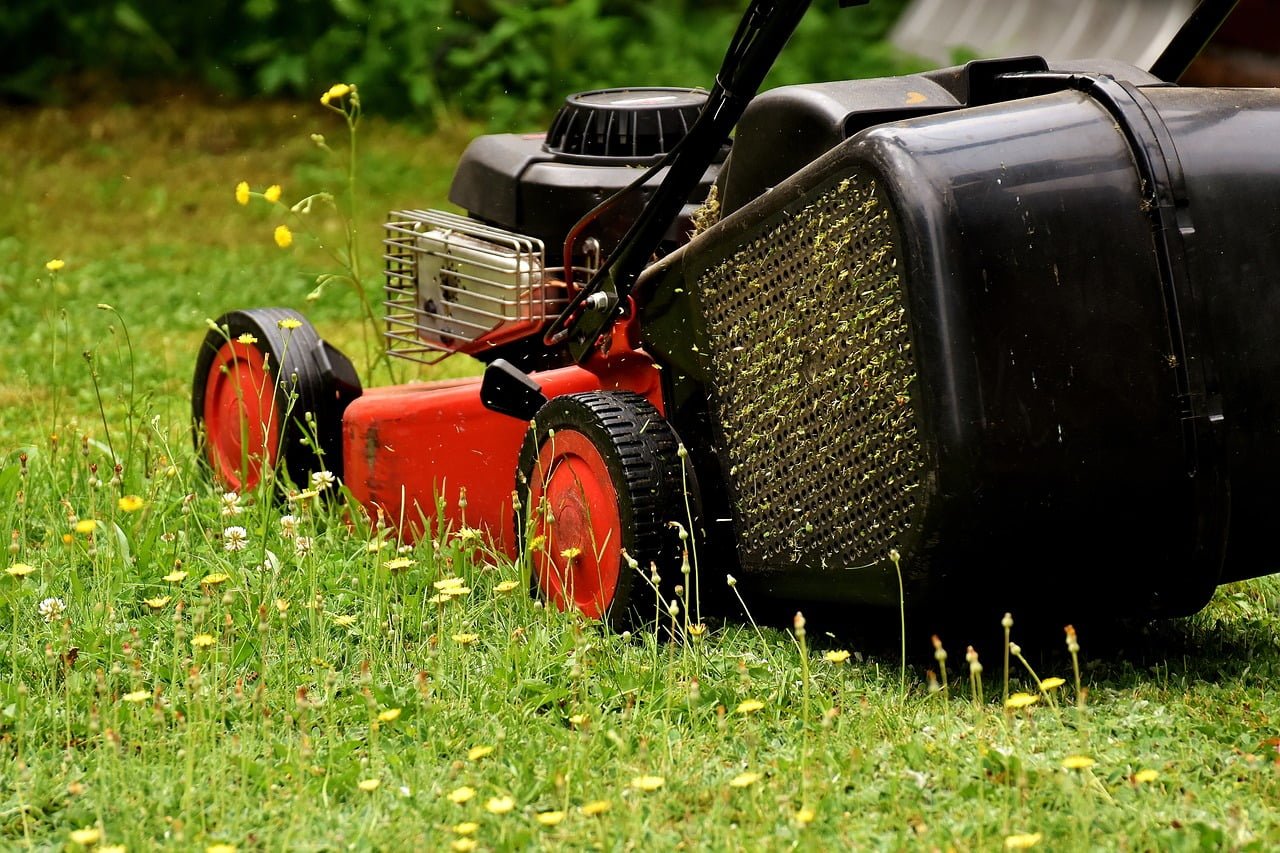‘No Mow May’ is a popular campaign led by the reputable British conservation charity, Plantlife. It urges gardeners across the UK to abstain from mowing their lawns throughout May. This simple act is a powerful strategy to help support the critical survival of our pollinating insects.
Four benefits of taking part in No Mow May this year:
- An abundance of nectar for pollinators
- Saving time and effort
- Decreasing energy consumption and saving money
- Reducing the need for watering
Top Tip
Try creating a ‘mow-hican’ style in your garden during No Mow May – it’s a fantastic compromise between aesthetics and promoting biodiversity.
This post contains affiliate links which means we may make commission from any qualifying sales with no extra cost to yourself.
First unfurled in 2019, the No Mow May campaign has seen participation skyrocket. According to PlantLife’s records, the number of gardeners choosing not to mow during May has tripled within just three years. Participants are kindly requested to explore a square metre of their uncut grass and upload their findings in the Every Flower Counts survey available on the Plantlife website.
My can be an exciting yet hectic month for gardeners across the UK. As we eagerly prep our gardens for the forthcoming summer, our to-do list grows almost as fast as our lawns. Borders to prep, seedlings to nurture, fences craving a fresh lick of paint – all while the generous sunlight speeds up the growth of our plants. In this sea of gardening chaos, it’s easy to succumb to the urge to mow our rapidly growing lawns. But participating in No Mow May, letting go of the mower, can bring about substantial benefits, not just for the crucial pollinators, but for us all.
Benefits of No Mow May
1. An Abundance of Nectar for Pollinators

By refraining from mowing, hidden flowers in your lawn get the chance to bloom and bolster biodiversity. The likes of daisies, dandelions, and cranesbill – often seen as inconveniences – burst into life, providing a feast of nectar for our buzzing friends, bees, butterflies, and other beneficial insects.
If the thought of surrendering your entire neatly-trimmed lawn for a month seems a bit daunting, why not consider letting a small patch of your lawn grow wild? This minor adjustment enables the grass to grow longer, not just for one month, but beyond. Participating in No Mow May is an excellent way to tempt bees and butterflies into your garden. For further information on plants that will draw in more pollinators, check out our other blog posts.
2. Save Time and Effort

The idea of letting a lawn grow wild for an entire month may sound like heaven to some, but for others, the thought of their perfectly manicured lawn running free can be unnerving. Regardless, one undeniable benefit of participating in No Mow May is the amount of time and energy saved. You could use this windfall of time to bask in the company of your loved ones in the garden, or to tackle other pressing gardening tasks.
As Felicity Harris, Head of Participation at Plantlife, put it, “It is not only plants and pollinators that benefit – we do too. Less mowing gives garden lovers more time to relax and reconnect with nature. Those hours previously spent mowing can be used to spend time with others building a wildlife pond or perhaps a bug hotel”.
3. Decrease Energy Consumption and Save Money

Another advantage of No Mow May this year is the reduction in your energy consumption. With energy prices taking an upward swing across the UK over the last year, giving your electric lawnmower a rest for a month (or longer) can help in reducing your energy usage. While this might not be your main incentive for joining No Mow May, it certainly is a helpful bonus.
4. Reducing the Need for Watering

2022 was officially the UK’s hottest year on record, with the top 10 hottest years all occurring in the last two decades. As this trend persists, our lawns require more watering and need to become more resilient to drought. Participating in No Mow May lets longer grass cast more shade, thereby reducing evaporation. This slowdown in soil drying can help conserve water and allow your lawn to better withstand the increasingly frequent warmer temperatures.
Can I still mow parts of my lawn throughout No Mow May?
For the benefit of our pollinating friends, you could opt for a ‘mohican’ style, having sections of lawn neatly trimmed, and other areas left gloriously wild. This creative gardening approach helps in enhancing biodiversity. You can achieve this by leaving islands of longer grass and maintaining short, neat walkways throughout May. This will ensure that the wilder areas appear intentional and well cared for, rather than neglected.
What can I expect to grow in my lawn in No Mow May?
Even the most frequently mown lawn will harbour a variety of flowers including daisies, buttercups, and clover. By joining No Mow May, you’re likely to see even more species emerge, adding diversity and intrigue to your garden. Keep your eyes peeled for unexpected visitors such as cow parsley, oxeye daisy, wild carrot, and red clover. Plantlife has a handy guide on their website detailing these and other ‘no mow’ lawn species.
How do I cut my lawn after No Mow May?
After embracing the wildness of No Mow May, you might be itching to get your lawn back under control. If you decide to leave a section of your lawn uncut to aid biodiversity, having a mix of long and short grass can enhance the overall aesthetic of your garden.
If you plan on trimming your entire lawn, we recommend doing it gradually, beginning with the highest setting on your mower. If your lawn has grown significantly, you might find it helpful to use a strimmer before running the mower over it. Cutting your lawn back slowly gives any small mammals enjoying your new wilderness enough time to move on before you return it to its shorter state.
Frequently Asked Questions
Q: Will No Mow May ruin my lawn?
Quite the contrary! Participating in No Mow May can actually benefit your lawn. By allowing the grass to grow, you enable the development of a richer and more diverse ecosystem in your garden. Moreover, longer grass shades the soil, reducing evaporation and helping it to retain moisture, which can make your lawn more resilient in the face of increasingly warmer temperatures. Once June arrives, you can slowly trim your lawn back into shape, perhaps even leaving some areas longer to maintain this diversity.
Q: Should you cut wet grass?
While it’s not necessarily harmful to cut wet grass, it’s generally best avoided for a few reasons. Wet grass can cause your lawnmower to clog, leading to uneven cuts and potentially damaging the mower. Also, the clippings from wet grass can clump together, which can lead to thatch build-up. Plus, it’s safer to mow dry grass to prevent slipping and mower mishaps. If you have to mow wet grass, ensure your mower blade is sharp and clean the deck regularly to prevent clogging.
Q: Should I leave grass clippings on lawn UK?
Yes, it’s actually recommended! This practice, known as “grasscycling”, involves leaving the grass clippings on the lawn after mowing. These clippings decompose rapidly and return essential nutrients to the soil, promoting a healthier lawn. It’s a natural way to fertilise your lawn and can reduce your need for synthetic fertilisers. Just make sure the clippings are small and distributed evenly so that they don’t form clumps which can smother the grass underneath. During No Mow May, though, this won’t be an issue, as you’ll be giving the mower a well-deserved break!






